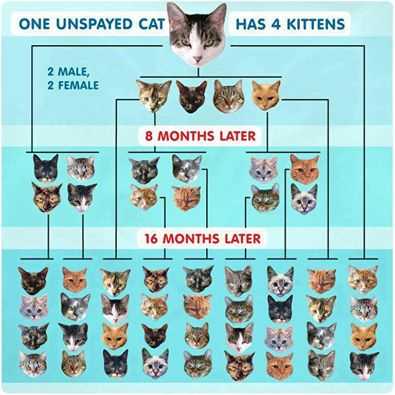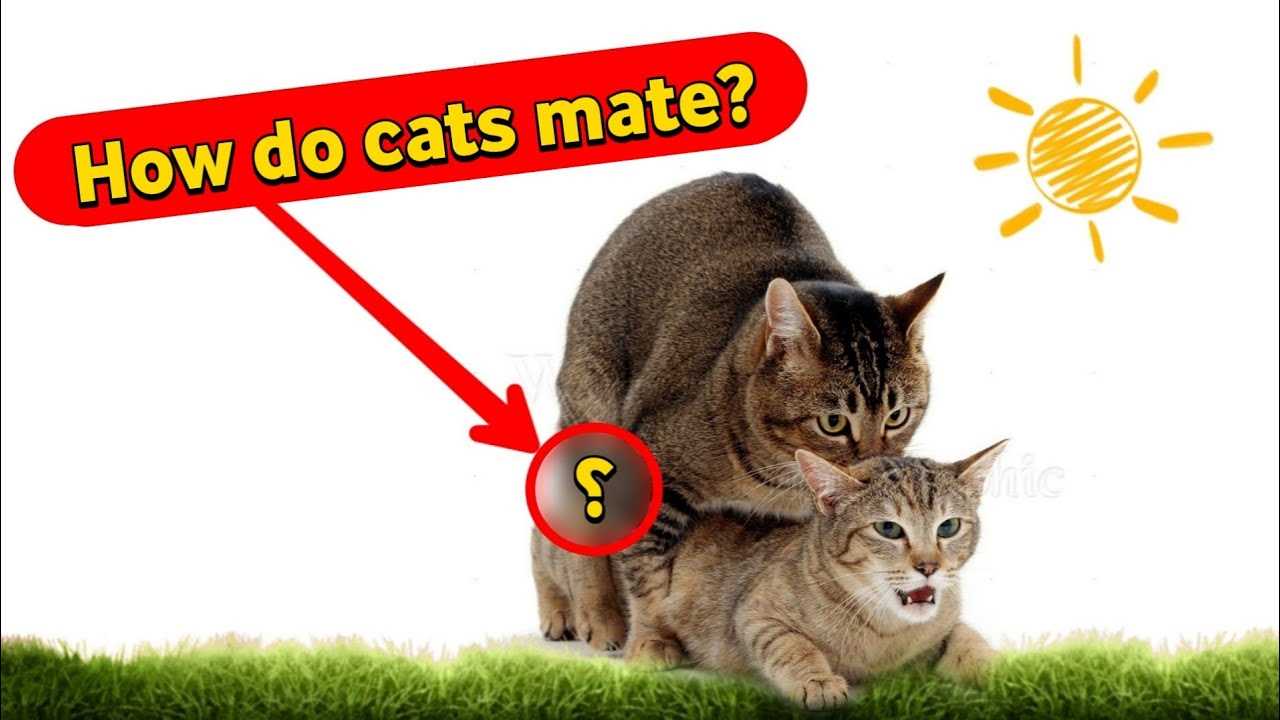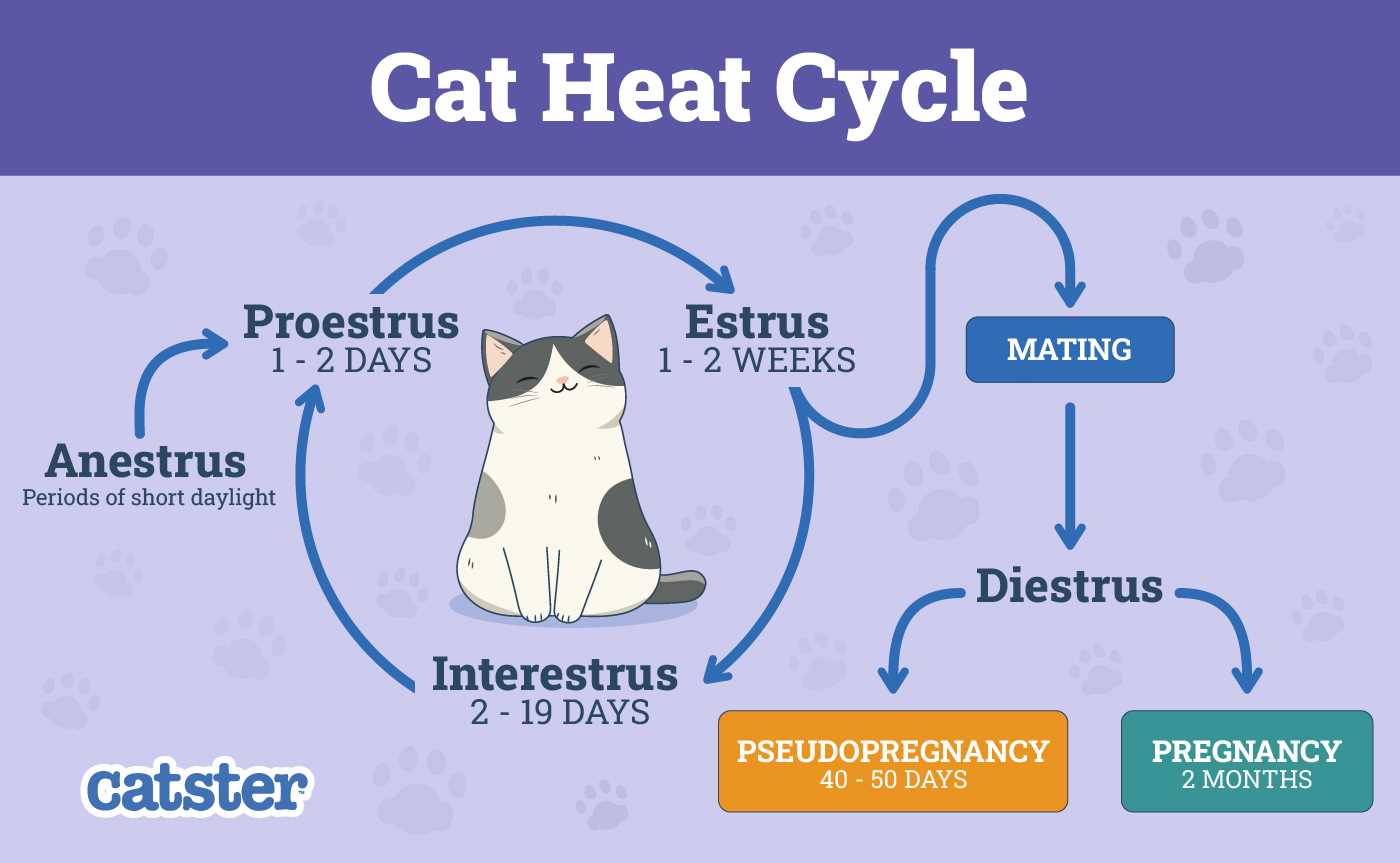Let’s get straight to the point: a female feline can mate as early as five months old, and once she’s in heat, she can become pregnant within 24 hours. This means that if conditions are right, a single queen can give birth to multiple litters each year.
Typically, a litter consists of two to five kittens, but it’s not uncommon for a single pregnancy to yield up to ten. With a gestation period of about 63 to 65 days, you can see how quickly a single female can expand her family, especially if she is allowed to breed multiple times each season.
By the time she reaches her first birthday, she could potentially be the matriarch of a sizable lineage, especially considering that her offspring can also start reproducing within a few months of their own birth. Keeping track of such rapid growth can be quite the challenge!
Reproductive Rates of Felines

To understand how quickly these little furballs can multiply, it’s important to note that a female can reach maturity around five to twelve months of age. Once she’s ready, the cycle can produce several litters each year, with an average of four to six kittens per litter.
If conditions are optimal, a single female can give birth to up to three litters annually. This means one cat could potentially contribute to the population with over twenty kittens in just a year, considering she mates regularly.
Gestation lasts about 64 to 67 days, so the time from mating to welcoming new life is relatively short. After the kittens are born, they quickly grow, becoming independent within a few months, which allows for even more breeding opportunities.
For anyone considering expanding their feline family, spaying or neutering is a recommended step to prevent unplanned additions and promote a healthier lifestyle for the pets. By doing so, you help manage the population effectively.
Understanding the Feline Estrous Cycle
To grasp the reproductive habits of felines, it’s vital to know about their estrous cycle, which typically spans about 2 to 3 weeks. This cycle consists of several distinct phases: proestrus, estrus, metestrus, and anestrus. During proestrus, which lasts around 1 to 2 days, a female begins to show signs of readiness, but she is not yet receptive to mates.
The estrus phase, or heat, follows and can last from 3 to 10 days. This is when a queen will actively seek out partners and display vocalizations, restlessness, and affectionate behavior. It’s crucial for pet owners to be attentive during this time, as it indicates her peak fertility.
Phases After Heat

Once estrus ends, metestrus occurs if no mating takes place. This phase can lead to a temporary hormonal shift, allowing the body to prepare for potential pregnancy. If fertilization doesn’t happen, the cycle will transition into anestrus, a resting phase that can last until the next cycle begins, typically during the warmer months.
Understanding these phases can help owners manage their pets’ behavior and reproductive health effectively. If you’re curious about other aspects of pet care, check out this article on is it bad to give cats baths for more insights.
Factors Influencing Breeding Frequency
To maximize the chances of offspring, several elements come into play. These can greatly affect how often a feline can bring new life into the world.
1. Age of the Female
A female’s age significantly impacts her breeding capabilities. Kittens can start their breeding journey as early as 5 months, but optimal health and maturity for breeding typically occur around 1 year of age. The reproductive window generally lasts until around 6 years, with a gradual decline in fertility thereafter.
2. Health and Nutrition
Health is paramount. A well-balanced diet rich in proteins, vitamins, and minerals is crucial. Malnutrition can lead to irregular heat cycles and decreased fertility. Regular veterinary check-ups ensure that any underlying health issues are addressed, supporting a more consistent breeding cycle.
3. Environmental Conditions
- Temperature: Warmth stimulates the reproductive cycle. Cooler environments may delay estrus.
- Light: Longer daylight hours can trigger hormonal changes, leading to increased breeding activity.
- Stress: A calm environment fosters better reproductive outcomes. Stressful conditions can disrupt cycles.
In addition, genetics play a role in determining how frequently a feline breeds. Some breeds may have predispositions towards higher reproductive rates. Lastly, hormonal treatments can influence breeding frequency, but these should be approached with caution and under veterinary guidance. For those curious about unusual scents, check out this link to understand what drug smells like cat pee.
Implications of Rapid Feline Population Growth
To manage the increasing number of felines effectively, spaying and neutering must be prioritized. This significantly reduces unintended litters, curbing the surge in population and its subsequent effects on local ecosystems and human communities.
Rapid multiplication of these creatures leads to various challenges. Overpopulation can strain shelters, leading to overcrowding and increased euthanasia rates. Communities may experience higher instances of stray animals, which can contribute to the spread of diseases, impacting both wildlife and humans.
Environmental Impact
An increasing feline population can disrupt local wildlife. These agile hunters can threaten native bird species and small mammals, throwing off the ecological balance. It’s crucial to implement responsible ownership practices to mitigate this effect.
Community Health Concerns

Health risks arise from uncontrolled populations. Strays can transmit diseases such as rabies and toxoplasmosis. Regular vaccinations and community awareness programs are essential to safeguard both pets and people.
Let’s get straight to the point: a female feline can mate as early as five months old, and once she’s in heat, she can become pregnant within 24 hours. This means that if conditions are right, a single queen can give birth to multiple litters each year.
Typically, a litter consists of two to five kittens, but it’s not uncommon for a single pregnancy to yield up to ten. With a gestation period of about 63 to 65 days, you can see how quickly a single female can expand her family, especially if she is allowed to breed multiple times each season.
By the time she reaches her first birthday, she could potentially be the matriarch of a sizable lineage, especially considering that her offspring can also start reproducing within a few months of their own birth. Keeping track of such rapid growth can be quite the challenge!
Reproductive Rates of Felines

To understand how quickly these little furballs can multiply, it’s important to note that a female can reach maturity around five to twelve months of age. Once she’s ready, the cycle can produce several litters each year, with an average of four to six kittens per litter.
If conditions are optimal, a single female can give birth to up to three litters annually. This means one cat could potentially contribute to the population with over twenty kittens in just a year, considering she mates regularly.
Gestation lasts about 64 to 67 days, so the time from mating to welcoming new life is relatively short. After the kittens are born, they quickly grow, becoming independent within a few months, which allows for even more breeding opportunities.
For anyone considering expanding their feline family, spaying or neutering is a recommended step to prevent unplanned additions and promote a healthier lifestyle for the pets. By doing so, you help manage the population effectively.
Understanding the Feline Estrous Cycle
To grasp the reproductive habits of felines, it’s vital to know about their estrous cycle, which typically spans about 2 to 3 weeks. This cycle consists of several distinct phases: proestrus, estrus, metestrus, and anestrus. During proestrus, which lasts around 1 to 2 days, a female begins to show signs of readiness, but she is not yet receptive to mates.
The estrus phase, or heat, follows and can last from 3 to 10 days. This is when a queen will actively seek out partners and display vocalizations, restlessness, and affectionate behavior. It’s crucial for pet owners to be attentive during this time, as it indicates her peak fertility.
Phases After Heat

Once estrus ends, metestrus occurs if no mating takes place. This phase can lead to a temporary hormonal shift, allowing the body to prepare for potential pregnancy. If fertilization doesn’t happen, the cycle will transition into anestrus, a resting phase that can last until the next cycle begins, typically during the warmer months.
Understanding these phases can help owners manage their pets’ behavior and reproductive health effectively. If you’re curious about other aspects of pet care, check out this article on is it bad to give cats baths for more insights.
Factors Influencing Breeding Frequency
To maximize the chances of offspring, several elements come into play. These can greatly affect how often a feline can bring new life into the world.
1. Age of the Female
A female’s age significantly impacts her breeding capabilities. Kittens can start their breeding journey as early as 5 months, but optimal health and maturity for breeding typically occur around 1 year of age. The reproductive window generally lasts until around 6 years, with a gradual decline in fertility thereafter.
2. Health and Nutrition
Health is paramount. A well-balanced diet rich in proteins, vitamins, and minerals is crucial. Malnutrition can lead to irregular heat cycles and decreased fertility. Regular veterinary check-ups ensure that any underlying health issues are addressed, supporting a more consistent breeding cycle.
3. Environmental Conditions
- Temperature: Warmth stimulates the reproductive cycle. Cooler environments may delay estrus.
- Light: Longer daylight hours can trigger hormonal changes, leading to increased breeding activity.
- Stress: A calm environment fosters better reproductive outcomes. Stressful conditions can disrupt cycles.
In addition, genetics play a role in determining how frequently a feline breeds. Some breeds may have predispositions towards higher reproductive rates. Lastly, hormonal treatments can influence breeding frequency, but these should be approached with caution and under veterinary guidance. For those curious about unusual scents, check out this link to understand what drug smells like cat pee.
Implications of Rapid Feline Population Growth
To manage the increasing number of felines effectively, spaying and neutering must be prioritized. This significantly reduces unintended litters, curbing the surge in population and its subsequent effects on local ecosystems and human communities.
Rapid multiplication of these creatures leads to various challenges. Overpopulation can strain shelters, leading to overcrowding and increased euthanasia rates. Communities may experience higher instances of stray animals, which can contribute to the spread of diseases, impacting both wildlife and humans.
Environmental Impact
An increasing feline population can disrupt local wildlife. These agile hunters can threaten native bird species and small mammals, throwing off the ecological balance. It’s crucial to implement responsible ownership practices to mitigate this effect.
Community Health Concerns

Health risks arise from uncontrolled populations. Strays can transmit diseases such as rabies and toxoplasmosis. Regular vaccinations and community awareness programs are essential to safeguard both pets and people.
Let’s get straight to the point: a female feline can mate as early as five months old, and once she’s in heat, she can become pregnant within 24 hours. This means that if conditions are right, a single queen can give birth to multiple litters each year.
Typically, a litter consists of two to five kittens, but it’s not uncommon for a single pregnancy to yield up to ten. With a gestation period of about 63 to 65 days, you can see how quickly a single female can expand her family, especially if she is allowed to breed multiple times each season.
By the time she reaches her first birthday, she could potentially be the matriarch of a sizable lineage, especially considering that her offspring can also start reproducing within a few months of their own birth. Keeping track of such rapid growth can be quite the challenge!
Reproductive Rates of Felines

To understand how quickly these little furballs can multiply, it’s important to note that a female can reach maturity around five to twelve months of age. Once she’s ready, the cycle can produce several litters each year, with an average of four to six kittens per litter.
If conditions are optimal, a single female can give birth to up to three litters annually. This means one cat could potentially contribute to the population with over twenty kittens in just a year, considering she mates regularly.
Gestation lasts about 64 to 67 days, so the time from mating to welcoming new life is relatively short. After the kittens are born, they quickly grow, becoming independent within a few months, which allows for even more breeding opportunities.
For anyone considering expanding their feline family, spaying or neutering is a recommended step to prevent unplanned additions and promote a healthier lifestyle for the pets. By doing so, you help manage the population effectively.
Understanding the Feline Estrous Cycle
To grasp the reproductive habits of felines, it’s vital to know about their estrous cycle, which typically spans about 2 to 3 weeks. This cycle consists of several distinct phases: proestrus, estrus, metestrus, and anestrus. During proestrus, which lasts around 1 to 2 days, a female begins to show signs of readiness, but she is not yet receptive to mates.
The estrus phase, or heat, follows and can last from 3 to 10 days. This is when a queen will actively seek out partners and display vocalizations, restlessness, and affectionate behavior. It’s crucial for pet owners to be attentive during this time, as it indicates her peak fertility.
Phases After Heat

Once estrus ends, metestrus occurs if no mating takes place. This phase can lead to a temporary hormonal shift, allowing the body to prepare for potential pregnancy. If fertilization doesn’t happen, the cycle will transition into anestrus, a resting phase that can last until the next cycle begins, typically during the warmer months.
Understanding these phases can help owners manage their pets’ behavior and reproductive health effectively. If you’re curious about other aspects of pet care, check out this article on is it bad to give cats baths for more insights.
Factors Influencing Breeding Frequency
To maximize the chances of offspring, several elements come into play. These can greatly affect how often a feline can bring new life into the world.
1. Age of the Female
A female’s age significantly impacts her breeding capabilities. Kittens can start their breeding journey as early as 5 months, but optimal health and maturity for breeding typically occur around 1 year of age. The reproductive window generally lasts until around 6 years, with a gradual decline in fertility thereafter.
2. Health and Nutrition
Health is paramount. A well-balanced diet rich in proteins, vitamins, and minerals is crucial. Malnutrition can lead to irregular heat cycles and decreased fertility. Regular veterinary check-ups ensure that any underlying health issues are addressed, supporting a more consistent breeding cycle.
3. Environmental Conditions
- Temperature: Warmth stimulates the reproductive cycle. Cooler environments may delay estrus.
- Light: Longer daylight hours can trigger hormonal changes, leading to increased breeding activity.
- Stress: A calm environment fosters better reproductive outcomes. Stressful conditions can disrupt cycles.
In addition, genetics play a role in determining how frequently a feline breeds. Some breeds may have predispositions towards higher reproductive rates. Lastly, hormonal treatments can influence breeding frequency, but these should be approached with caution and under veterinary guidance. For those curious about unusual scents, check out this link to understand what drug smells like cat pee.
Implications of Rapid Feline Population Growth
To manage the increasing number of felines effectively, spaying and neutering must be prioritized. This significantly reduces unintended litters, curbing the surge in population and its subsequent effects on local ecosystems and human communities.
Rapid multiplication of these creatures leads to various challenges. Overpopulation can strain shelters, leading to overcrowding and increased euthanasia rates. Communities may experience higher instances of stray animals, which can contribute to the spread of diseases, impacting both wildlife and humans.
Environmental Impact
An increasing feline population can disrupt local wildlife. These agile hunters can threaten native bird species and small mammals, throwing off the ecological balance. It’s crucial to implement responsible ownership practices to mitigate this effect.
Community Health Concerns

Health risks arise from uncontrolled populations. Strays can transmit diseases such as rabies and toxoplasmosis. Regular vaccinations and community awareness programs are essential to safeguard both pets and people.






